|
= August 2010 = |
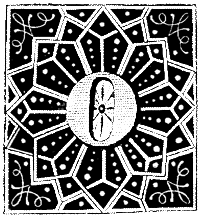
ne of the joys of working in a school is the long summer break that affords me the time to catch up on the huge pile of music awaiting review around here. At the moment, this pile also includes a chunk of vinyl desperate for attention, so, without any more ramble, let's Rumble.
Opening with a dirty garage swagger, then getting slowly darker and heavier “Wandering Eye”, is a rather fine 7” from Modey Lemon that deserves to be cranked up as it stomps around the room looking for a fight, the distorted vocals and primitive rhythm adding to its splendour. On the flip, the equally excellent “Cheetahs for Chariots”, has a more skewed view of live, stepping into Gabby Haines territory, and doing it bloody well.
Hailing from Turkey, the first 7” single from Umut Adan mixes a lively guitar driven A-Side with a more pastoral flip, resulting in a nicely balanced disc that will remind of such people as Jennifer Gentle, whose mainman Marco Fasolo produced these tracks. A definite Turkish delight and worth tracking down. (magog01@hotmail.com)

Finally for the 7”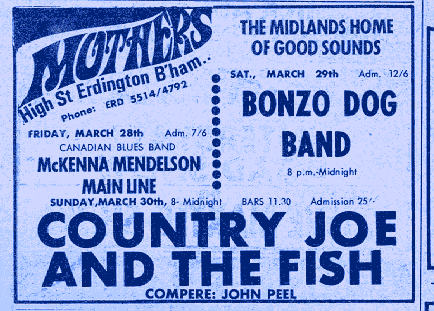 singles, the third of Autumn Ferments “Seasonal Sevens” series celebrates winter with two suitably frosty offerings, as well as being pressed on white and snowy vinyl. On “Winter's day”, the tale of a man becoming lost and then eaten by wildlife is sung by Dusty Stray, the macabre folk lyrics offset by a jaunty banjo led tune, whilst the other side is taken up by “Cool is the Snow”, a flurry of guitar notes accompanying this I.S.B inspired tune from Flake Brown, the songs complementing each other to create a wonderful little disc that is perfect for an evening around the fire. (www.autumnfermentrecords.com)
singles, the third of Autumn Ferments “Seasonal Sevens” series celebrates winter with two suitably frosty offerings, as well as being pressed on white and snowy vinyl. On “Winter's day”, the tale of a man becoming lost and then eaten by wildlife is sung by Dusty Stray, the macabre folk lyrics offset by a jaunty banjo led tune, whilst the other side is taken up by “Cool is the Snow”, a flurry of guitar notes accompanying this I.S.B inspired tune from Flake Brown, the songs complementing each other to create a wonderful little disc that is perfect for an evening around the fire. (www.autumnfermentrecords.com)
After a brief introduction of cheering whooping and hollering, “All Song Go to Heaven”, the latest album by Lizz King , becomes a wonderful collection of acoustic/electric songs that have an eerie quality that I really like, the instruments and voice blending beautifully, whilst the use of electronics, samples, saw, tuba, etc gives the songs an extra dimension, creating a richly worked tapestry that dazzles the ears. Working out of Baltimore and part of the Wham Collective, this is a mature and fully realised work that becomes better with every listen. (www.ehserecords.com)
On the same label, the music of Salamander Wool is an entirely different creature, certainly as heard on his first LP “Lunarsophic Sonambulist”, a disc filled with soundscapes, field recordings, home-made instruments, the tracks containing a fragile beauty, each cocooned in a gossamer web of sound. A perfect example of this is album opener “Moon of Arq”, a delicate and drifting piece that creeps under your sleeping soul leaving a psychedelic footprint, that glows in the darkness. Maintaining the quality throughout, this is an album that will delight and surprise every time it is heard.
Both Experimental and traditional, the collaboration of Seamus Cater (harmonica) and Woody Sullender (Banjo/laptop) has produced an album that is rich in texture and melody, the two instruments combining beautifully on eight instrumental tracks that flow beautifully together on their album “When We get to the Meeting”. With each piece seeming like a chapter in a story, it is hard to pick out individual tracks, the ebb and flow, melodies and drones, drifting in and out to create a dusty timeless novel in sound, one your ears will want to read on a regular basis. (www.deadceo.com)
With more than a passing nod to Lou Reed/The Velvets, “The Floating Celebration”, the latest album from Vaus is a fine collection of songs that is wonderfully arranged and filled with understated beauty, each a small gem sparkling like sunlight on water, briefly revealing themselves before being lost again in the current. Without pretension or flashiness, the band impress with their playing, allowing the songs to become their own identity, the music easy to get lost in, as one listen to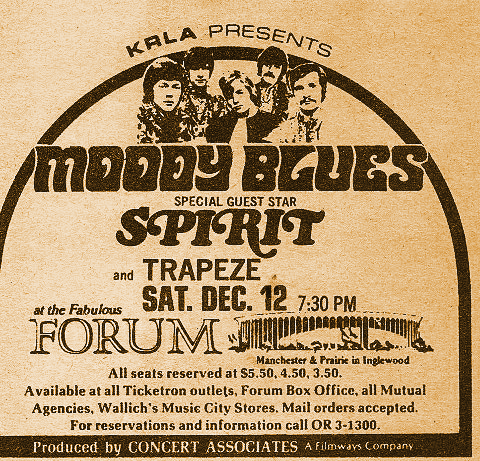 “San Francisco” or Felicity's Shell” will easily prove. (www.nightworldrecords.com)
“San Francisco” or Felicity's Shell” will easily prove. (www.nightworldrecords.com)
Next up, a couple of 60's re-issues on the ever wonderful Jackpot records, whose vinyl editions are beautifully put together with extensive sleevenote and an eye for detail. First up, the avante-garde psych of “Cave Rock”, deserves to be blasted out as Cromagnon destroy the peace and love vision of the decade in 40 exhilarating minutes. Featuring electronics, tape manipulation, cut-ups and general strangeness, as well as the usual instrumentation, the sound is also augmented by bagpipes, something which could go horribly wrong, but on this occasion works perfectly. Definitely not easy listening, the whole album is a magnificent freakout with “Ritual feast of the Libido” being the one to play to get rid of unwanted guest with no sense of humour, whilst opening track “Caledonia” is a stomping call to arms that sets the tone. Rare as it may be, you cant help feeling that this has been an influence on other artists over the years, the sounds of Throbbing Gristle, Faust, Acid Mother Temple other industrial noise units seemingly to be heard, the music almost ahead of its time as it groans and scrapes from the speakers, primitive rhythms adding to the ritual feel. Opening side two “Crow of the Black Tree” is one of the more structured pieces, beginning with some strummed acoustic guitar, the tension slowly mounting as vocals and percussion become more prominent with hypnotic intent. Finest of all, the deep drone of “Toth, Scribe 1” is the end of civilisation in ten glorious minutes, all hell let loose, rumbling and screeching into reality, unstoppable and exhilarating making the Room tremble and shake. Recorded in 1969, there is never a dull moment to be had, go get one and dive right in.
On the same label and probably familiar to many of you, comes “Corridor of Faces” the sole album from Massachusetts Lazy Smoke. Featuring some fabulous guitar playing throughout, the songs have a sweet west-coast feel that is counterbalanced by a darkness in the lyrics and the fact that the vocals sound like John Lennon, the whole album sounding like a cross between Love and The Beatles. With quality songs a-plenty, “Come With The Day” still manages to stand out, a drifting slice of psych that is filled with sadness, the guitar picking up on the lyrics perfectly. Heavier and more psychedelic “Salty People” is another standout track, whispered vocals and effects weaving through the song to great effect. Opening side two, “Undersky” has a wonderful solo, that dominates the tune, whilst”There Was a Time” sounds like it should have been a hit single with the right promotion and a little bit of luck. After the soft and haunting ballad “Am I Wrong”, the album ends with “How Did You Die”, a song which sounds like it could be a Beatles rarity in all departments so similar is the sound and arrangement. Without a bad song to be found, this is another worthy addition to your collection, especially on lovingly pressed vinyl
with sleeve notes and the obvious care that has gone into this release. (www.jackpotrecords.com)
Far aw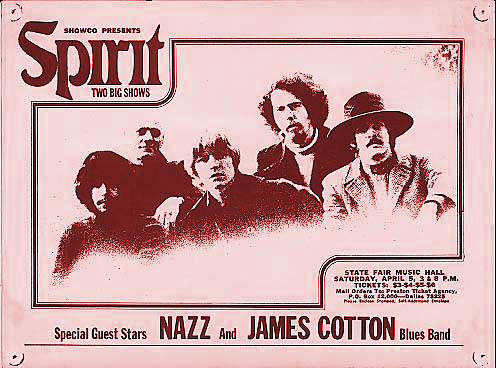 ay on the outer reaches of the universe there sits a Marshmallow Staircase and if you choose to ascend, a whole world of cosmic sounds await your ears as the album “Terror de Lune” blasts across the cosmos with a space rock heart and a huge grin, the music spiralling upwards into oblivion. Composed and played by Jeff Gilotti, this album is a time-machine ride back to 1971, shades of floyd, hawkwind, and a host of others stalk the songs, but it is done so well that this is a retro treat and far more interesting than anything those band members are producing these days. After a suitably tripped out intro, the magnificently titled “Lesbian Sushi” starts the journey, a throbbing bass, stoned keys and echoed vocals doing the business before “Naked Africa” ignites the rockets and we leave earth behind. Elsewhere on side one, “Highway Snuff Bubble” is a electronic storm, whilst closer “Inspector 71” drifts slowly away from the sun, languid and pulsing at the same time. In much the same vein “E66”, kicks off side two and you expect the voice of Michael Moorcock to appear at any moment, as the music drifts on infinitely. After the fine “The Healing Ray”, the rest of side two is taken up with “XLCK” a space-rock behemoth the size of a meteor, hurtling through space and time to brush the earth aside. There ain't nothing you can do to stop this baby, so you may as well enjoy the ride, immerse yourself in the sounds and just smile. Somewhere, someone is lighting a patchouli joss stick, and after hearing this, it could just be you. (www.summerstepsrecords.com)
ay on the outer reaches of the universe there sits a Marshmallow Staircase and if you choose to ascend, a whole world of cosmic sounds await your ears as the album “Terror de Lune” blasts across the cosmos with a space rock heart and a huge grin, the music spiralling upwards into oblivion. Composed and played by Jeff Gilotti, this album is a time-machine ride back to 1971, shades of floyd, hawkwind, and a host of others stalk the songs, but it is done so well that this is a retro treat and far more interesting than anything those band members are producing these days. After a suitably tripped out intro, the magnificently titled “Lesbian Sushi” starts the journey, a throbbing bass, stoned keys and echoed vocals doing the business before “Naked Africa” ignites the rockets and we leave earth behind. Elsewhere on side one, “Highway Snuff Bubble” is a electronic storm, whilst closer “Inspector 71” drifts slowly away from the sun, languid and pulsing at the same time. In much the same vein “E66”, kicks off side two and you expect the voice of Michael Moorcock to appear at any moment, as the music drifts on infinitely. After the fine “The Healing Ray”, the rest of side two is taken up with “XLCK” a space-rock behemoth the size of a meteor, hurtling through space and time to brush the earth aside. There ain't nothing you can do to stop this baby, so you may as well enjoy the ride, immerse yourself in the sounds and just smile. Somewhere, someone is lighting a patchouli joss stick, and after hearing this, it could just be you. (www.summerstepsrecords.com)
Rising through a mountain fog, The Ascent of Everest, are the sound of the sun breaking free from the clouds, huge cinematic waves of sound that recall the best of Mono blended with the string repetition of Steve Reich or Philip Glass.. Working out of Nashville “From This Vantage” is their second album, the band utilising, strings, trombone, lapsteel, electronics, and a whole array of different instruments to devastating effect, the music striving to move ever upwards. With each track blending with the next, the album can be viewed as one long piece, beautifully constructed and paced, with songs such as “Dark, Dark My Light” managing to shine out, even within a disc of such quality. Achingly beautiful, the strings motif that opens side two heralds the sweetness of “Sword and Shield”, a song arranged with such precision that not a second is wasted, the brief lyrics only adding to the atmosphere. Talking of lyrics, there is a hint of regret, wistfulness and sadness permeating the album, yet these feelings are resolved in the final line of the final (title) track, “Looking back From This Vantage Point, How Could I Have Been So Blind”, perfectly summing up all that has gone before . Beautifully packaged, this is an album that will be enjoyed for years to come, haunting and timeless, highly recommended. (www.meltface.net)
Entitled “Maru, Mankaku, Shikaku (Circle, Triangle Square), the latest collobaration between Kawabata Makoto and Michishita Shinsuke, is a breathtaking soundscape consisting of two long and intense pieces. Played entirely on acoustic instruments, the tonal depths and range of sounds the musicians achieve are truly astonishing, whilst their ability to harmonise, improvise with each other is almost telepathic. Sounding like the wind chimes from God's own garden, “Rock of Fate” ushers you in with serene grace, the chimes soothing your mind, once inside however, the sunlight, heady perfumes of the flowers and the intensity overwhelm, the music building in tension, a rising drone that compels you to sit and empty your mind, allowing the sounds to flow through you, the music of the spheres awoken in your memory. As the piece moves on it becomes more spacious, opening up to allow a wider range of sounds, the buzzing of divine insects following secret rituals and pathways, until finally all is still, reality comes back and your are at peace. Turn the disc over and “Spiders Thread” continues in a similar vein, although this time there is a more abstract feel to the piece, the sounds tumbling over each other as if caught in a tsunami of drone and experimentalism. Beautifully balanced, the music is ever changing, inviting the listener to swim along, lost in the joyous sounds, delighting in the ripples, eddies and swirls. Housed in a wonderful gatefold sleeve, with a fab picture of the musicians inside and pressed on lovely green vinyl, this is the complete package, track one down. (http://prophasemusic.com/default.aspx)
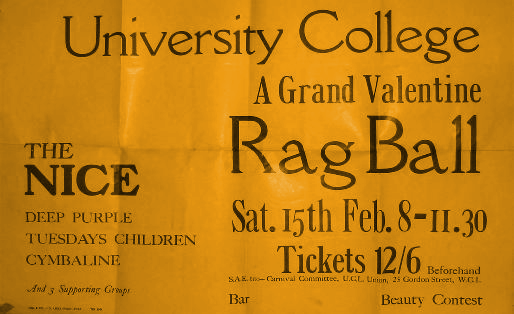
From the same label and also housed in a magnificent gatefold sleeve, “Gypsy Woman” is a timeless and meditational album from Janina Angel Bath, whose voice is layered like silk over eastern percussion and slow motion droning strings. Slow and mindful, it takes a while for your brain to settle into the album's delicious groove, but once the magic of “Everyday is Different” takes hold, there is nothing left to do but relax and dream, allowing the minimal and haunting psychedelia to take you away. Moving on to the title track, the addition of a faraway flute adds another layer of beauty to the music, the mystical, quest-driven lyrics perfectly in sync with the drifting ambience of the arrangement. Opening side two, “Mystic lady” has echoes of Quintessence, or classic Gong, deep rooted eastern psych, with some rippling guitar twinkling throughout. This ambience continues for the rest of the side, sitars coming to the fore, creating music for late-night visualisation, the flicker of a candle the only light you need. Included in the album is a bonus 10” disc that contains six more songs, all wreathed in the same perfumed bliss, each as perfect as the previous song, including the lovely flute and drum happiness of “Roaming Song”, whilst “Life, Everlasting Flowers” is a light and airy drone that sings of summer. Highly recommended.
A vinyl only release, and the last one for a while “All Hope is Blind” is a dreamy and evocative collection of songs from Shalloboi. Drenched in fragile strings and slow-motion arrangements, this is a collection that whispers from the speakers, the music as distant as a heat haze , delicate and woven from gossamer thread. Kept in the analogue realm and with as much as possible recorded live, the album has a softness that benefits the songs, sounding ,at times, like a more orchestrated Galaxie 500, the music quietly weaving its magic spell, a ripple moving across still water. (www.shalloboi.com)
Pressed on beautiful black and white vinyl, comes a wonderful split album featuring one side each by Carlton Melton and Empty Shapes, the latter containing one Dan Cohoon, a regular contributor to the Terrascope Forum. Starting with the drum and guitar freakout of “Call and Response” Carlton Melton are having a ball, with the guitar work of Rich Millman shining out, his imaginative and psychedelic musings lifting the track into space, whilst the drums hold it together adding their own punctuation to the music. On the sweet rising drone of “Purer”, the band expand from a duo to a four-piece, the addition of bass and second guitar allowing the band to fill out the sound, producing a glorious track that reveberates around the room with the power to levitate. Flip the disc and “Mlk” displays similar powers, a droning track that creeps under the skin with hypnotic rhythm, the mix of organ, guitar and treated guitar producing a richly textured undercurrent, the addition of some fine sax adding another layer to the aural density. Moving on “Hell of a Night” has some distorted/echoed vocals, the words lost in the psychedelic haze of the music, a dense fog of glorious noise, whilst final track “Lord” shimmers with lysergic intent, a splendid comedown, drifting into the dawn with a smile etched on its face. (www.carltonmeltonmusic.com) (emptyshapes@gmail.com)
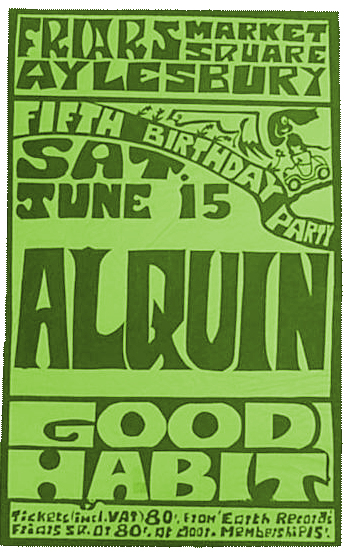
Thanks to everyone who sent us vinyl, always a pleasure. Now it is time to hand over to Ian, who will guide you through some CD's worthy of a listen.
Our friends Team Clermont are first up for one of their periodic assaults on the North Face of the Terrascope and what sounds like a serious attempt at some serious airplay with a clutch of catchy and commercial sounding releases.
Elk City is a case in point. “House of Tongues” (Friendly Fire Recordings FFR-019) is timeless in so much as it borrows so heavily on 70s and early 80s good quality radio-friendly rock in a 40 minute trawl of Planet AM/FM that you think you’ve travelled back in time. Opener “Real Low Riders” finds singer Renee LoBue coming on like a less countryfied k d lang before the band lets rip into a tear-up that would have you punching the air at the wheel of your convertible if you had one (not such a good idea in yer standard saloon). “Wire Goats” could easily be a perfectly decent Fagen/Becker outtake, whilst “Nine O’Clock in France” is a neat little gem again redolent of variously slightly airbrushed AOR kings but which features the guilelessly joyous chorus “It’s Nine o Clock in France, we’re going out for cocktails and ice cream”. Suits me, Madam! Particularly worthy of mention is the eclectic “The Onion” with its life-affirming lyric “I finally have the courage to look into the mirror and stand up for my life”. “Neat Knight” picks itself up by its bootstrap with a swell chorus and an ooh-la-la refrain that gladdens the heart. “For The Uninitiated” pitches us into the New Wave where Martha and the Muffins meet Blondie in a short burst of pogo-lite activity, “Stars” and “Protection” continue the trawl through elder sibling’s record collection, the latter with a definite nod to Dusty Springfield which becomes more pronounced on the closing track “2010”-an ironic title as we now seem to have regressed back to the 1960s - a moody slice of loveliness and probably the best track on the album. And so it goes…10 nicely written and arranged tracks that are elevated well above the ordinary thanks to some strong playing, particularly by guitarist Sean Eden, formerly of Eden and a decent vocal performance by LoBue. Not life changing, not even challenging, but a reminder to those of us who tend to take our music too seriously that, when all is said and done, it is there to be enjoyed. Somewhere Stateside a radio station ought to be playing Elk City now.
That Johnny Bertram doesn’t sound like Elk City is probably because he comes from Idaho and not NYC, and although the potential mass appeal is no less evident you get a sense of much more wide-open space and an altogether more organic experience. His band The Golden Bicycles have served up the grits with “Days That Passed” (Esperanza Plantation ESP2018). Equal parts REM (and only occasionally in their slightly irritating Automatic period), the Decemberists (hooray, hooray) and Midlake served with a slug of Band of Horses (still with me?) a soupcon of down home Neil Young and what sounds like a pinch of Al Stewart’s “Year of the Cat” (lawks!) this is an enjoyable enough romp through the baseball cap, check shirt and pick-up territory of the mid-tempo mid-west (ok I sneaked a look at the photo on the inner sleeve). Strong tracks abound, but particular mention must be made of the rousing “The Fall”, which has pride of place on the iPod, and tips of the hat to “Fortification”, which has a breezy “alt” feel that conjures up straight roads and a big sky, and “Private Land” which chugs along in a harder but still pleasing country rock groove, while “Rocky Springs” is one of a clutch of fine examples of Bertram’s talent for crafting the more restrained, melodic number. A consistently fine and (again) undemanding collection of songs worthy of both airplay and audience, somewhere in the Mid-West of America a radio station ought to…oh well you get the picture.
1986 was, as I recall, a pretty unremarkable year for music, not so the band of the same name who may just have scooped the Team Clermont yellow jersey for this month with th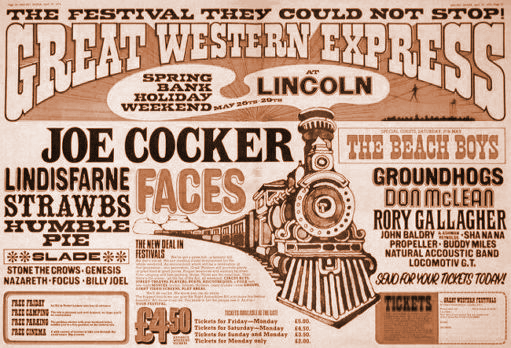 e insolently titled “Everyone Is Whatever I Think They Are” (Palentine Records). A vehicle for Austin TX (where else?) duo Giorgio Angelini and Cully Symington, aided and abetted by members of Jesus Lizard and Swervedriver, 1986 offer up a heady and raucous mix of bad-ass noise mining Dinosaur Jr (and occasionally Mascis’ classic rock off-shoot Sweet Apples), Stooges, Nirvana and the White Stripes as interpreted by Nick Cave/Grinderman – or should that be the other way round? No matter. After dispensing with what seems to be the all too common trend for underwhelming opening numbers (the instrumental “Fantastic Lion” the only non Angelini composition here) we get down to business with the first track proper, “Habits” which is a nasty, grungy tonic for these ears. “Arrows” exudes creeping menace before leaping out of the shadows and blowing a loud and dirty raspberry in your face. “Undertow” sounds like the miscreant issue of a shotgun marriage between Mascis and Cobain and is made to be played loud at crowd surfing conventions (if such a thing exists, if not then someone ought to invent it). “Black Spring” doesn’t merely nod towards Dinosaur Jr it head-butt’s it hard, and all the better it is for that. The adroitly titled “Aunts Marching” changes the pace and mood at exactly the right moment and is the first glorious example of the White/Cave graft, with lo-fi discordant guitar, distorted vocals and slap dash, crash bang book 1 drumming. “Rise/Fall” is almost light relief, or as much as “met a girl who could tear out your soul” and is pure 1970s Eastern Seaboard shaky voiced indie-punk of the Jonathan Richman and Lou Reed school and the nearest thing here to anything that might be termed melodic. How better, then, to contrast with this month’s best all out Saturday night stomper, “Jesus (Is On The Phone)”, the dumbest and best roustabout that Jack White hasn’t written for years. “Loud/Soft” pitches us back into Dinosaur territory, and the whole thing comes to a halt after a scant 33 minutes leaving you wanting more. Nothing doing, I’m afraid, but in an age when so many releases are packed with filler how refreshing it is to hear an album where barely a note is wasted. Gear!
e insolently titled “Everyone Is Whatever I Think They Are” (Palentine Records). A vehicle for Austin TX (where else?) duo Giorgio Angelini and Cully Symington, aided and abetted by members of Jesus Lizard and Swervedriver, 1986 offer up a heady and raucous mix of bad-ass noise mining Dinosaur Jr (and occasionally Mascis’ classic rock off-shoot Sweet Apples), Stooges, Nirvana and the White Stripes as interpreted by Nick Cave/Grinderman – or should that be the other way round? No matter. After dispensing with what seems to be the all too common trend for underwhelming opening numbers (the instrumental “Fantastic Lion” the only non Angelini composition here) we get down to business with the first track proper, “Habits” which is a nasty, grungy tonic for these ears. “Arrows” exudes creeping menace before leaping out of the shadows and blowing a loud and dirty raspberry in your face. “Undertow” sounds like the miscreant issue of a shotgun marriage between Mascis and Cobain and is made to be played loud at crowd surfing conventions (if such a thing exists, if not then someone ought to invent it). “Black Spring” doesn’t merely nod towards Dinosaur Jr it head-butt’s it hard, and all the better it is for that. The adroitly titled “Aunts Marching” changes the pace and mood at exactly the right moment and is the first glorious example of the White/Cave graft, with lo-fi discordant guitar, distorted vocals and slap dash, crash bang book 1 drumming. “Rise/Fall” is almost light relief, or as much as “met a girl who could tear out your soul” and is pure 1970s Eastern Seaboard shaky voiced indie-punk of the Jonathan Richman and Lou Reed school and the nearest thing here to anything that might be termed melodic. How better, then, to contrast with this month’s best all out Saturday night stomper, “Jesus (Is On The Phone)”, the dumbest and best roustabout that Jack White hasn’t written for years. “Loud/Soft” pitches us back into Dinosaur territory, and the whole thing comes to a halt after a scant 33 minutes leaving you wanting more. Nothing doing, I’m afraid, but in an age when so many releases are packed with filler how refreshing it is to hear an album where barely a note is wasted. Gear!
From Austin TX we journey to another hotbed of musical activity, Athens GA. Recorded at the now defunct Georgia Theatre, “Sand and Lines” (One Percent Press OP010CD) showcases Venice Is Sinking’s pleasant if rather slight and occasionally anodyne brand of Americana. There’s nothing particularly amiss with any of the 10 tracks but there’s nothing special about them either, as a result of which the attention is apt to wander. Pick of the bunch is an impressive, slow take on “Jolene” that ought really to find its way onto the soundtrack of one of those bloodless teenage vampire love story films that seem all the rage at the moment. A pity the rest of the album doesn’t quite manage to reach the same heights.
“Chasing After Shadows…Living With Ghosts” (Hammock Music HMK-006CD) is the 4th LP release by Hammock and is the follow-up to 2008’s just as flamboyantly titled “Maybe They Will Sing For Us Tomorrow”. Whilst undoubtedly well crafted and performed, not to mention melodic, lustrous and evocativ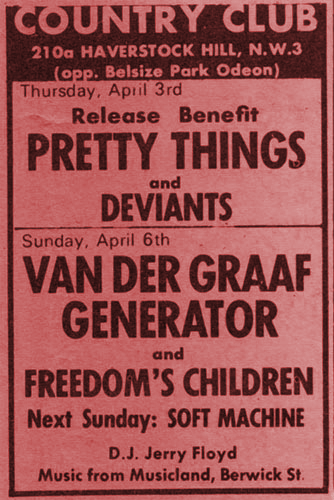 e by turn, the overall impression is that this is a bit of a flightless bird – it might look good, it might promise much, but it doesn’t deliver very much new beyond the first number, and essentially repeats itself 11 times more over 72 occasionally inspired minutes. Ultimately what Hammock has unwittingly succeeded in doing is to score the backing track for the next Coldplay album. Fans of early New Age music, Sigur Ros and orchestral Pink Floyd should enjoy this for itself the rest of us may need a good book to help digest it in its entirety.
e by turn, the overall impression is that this is a bit of a flightless bird – it might look good, it might promise much, but it doesn’t deliver very much new beyond the first number, and essentially repeats itself 11 times more over 72 occasionally inspired minutes. Ultimately what Hammock has unwittingly succeeded in doing is to score the backing track for the next Coldplay album. Fans of early New Age music, Sigur Ros and orchestral Pink Floyd should enjoy this for itself the rest of us may need a good book to help digest it in its entirety.
Vying for a place on your reviewer’s critical medals podium this month is “Space Between The Drops” (Trail Records TR005) by the very wonderful Sky Cries Mary from Seattle, Washington, USA, which is based around Roderick and Anisa Romero. This is a collection of some of their career highlights spanning the twenty years from their third album “Exit at the Axis”. Opening number “Cornerstone” from the aforementioned album is ambient swamp music, featuring a hypnotic rhythm, an eerie twanging guitar, spoken and half sung vocals, and some good old fashioned scratching. The overall feel as with most of the tracks here is of sensual if rather spooky chill-out dance sound played with real instruments and which seems to draw its inspiration from the Mojave Desert, the Louisiana Swamps and several points east. Also from this same album is “Elephant Song” which introduces African drum rhythms to the mix as well as Anisa’s trademark harmonies and plaintive ululations. Again it is very repetitive and hypnotic, and not untypical of Leftfield. “Rain”, which is taken from album number four, entitled “A Return to Inner Experience”, kicks off with an ominous rumbling bass, the prelude to the storm of rain effects an underpinning rhythm and a slide guitar that suggests loss, longing and desert wandering. The album “This Timeless Tide” offers up three tracks that form the spine of this collection. The delightfully delicate and tuneful “These Old Bones”, is followed by “Slow Down Time”, which appears to do just that and which sounds like “Bones” narcoleptic sibling before kicking into a hectic climax on which the guitarist does gives some serious grief to his wah-wah pedal. Sumptuous stuff indeed, but the cornerstone and undoubted highlight has to be “Four AM”, all 15 minutes of it, and which has all the hallmarks of a Floydian epic, slowly brooding, multi-textured soundscapes with understated sub-Polynesian drum rhythms and the added ingredients of both glissando and Anisa’s plaintive and disembodied-sounding ululating. This is seriously excellent and is heading quickly for the iPod. Not that the rest of this unfeasibly strong compilation disappoints. The extravagantly titled “The Ant, The Stars, An Owl and It’s Prey” is like Massive Attack at their majestic, moody, female-voiced late 1990s best (and without those blokes mumbling over everything), whilst on “Want” (extended version) Anisa becomes ever more soulful over a righteous groove. The best actual song on the album is “Gliding”, a classic of its kind and so familiar sounding that it seems to have been around forever. It is even reprised in an un-credited Latino take at the end of “Missing” which, officially at least, breasts the tape and is the most soulful and jazz-like of the selections. Mmmm, nice…
Unless you are familiar with an artist then it’s always difficult to know how representative a compilation such as this actually is. No matter, because on the strength of this excellent anthology I would say that it is definitely worth exploring further into the strange and delightful world of the Romeros and particularly the clutch of three or four albums from 1991-97 from which most of the selections here are drawn. In the meantime here is your ideal place to start.
www.trailrecords.net
www.skycriedmary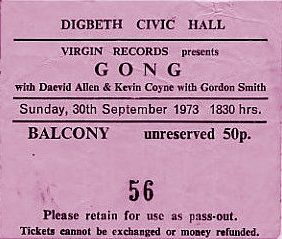 .com
.com
It’s always good to hear new bands here on Planet Terrascope and they don’t come much more freshly packaged than Winnipeg’s Right Through. “The Sun Hot” (Mortfell Oktorium 011) is their first full release and showcases a stripped down, jaunty, indie rock sound packed with decent hooks and a lot of good ideas. It is by no means a complete article – the vocals are in need of urgent attention and one or two numbers are let down by the arrangements. Also certain tracks would have benefited from a bit more attention to running time. The best case in point is “At Once” which at three and a half minutes would have been a spot-on opening number but which is less effective (but nonetheless still impressive) at six minutes. However, these quibbles aside, let’s bear in mind that these talented guys were still in high school when this was recorded in late 2009 and I wouldn’t be surprised (or disappointed) to hear more of them. File under “shows promise”.
The more diligent browser will no doubt recall the name Glenn Jones cropping up on the recent Robbie Basho tribute (see Reviews, June 2010). “Barbecue Bob in Fishtown” (Strange Attractors Audio House SAAH056) is a nine-piece collection of solos for acoustic 6 and 12-string guitar and 5-string banjo that includes “1337 Shattuck Avenue, Apartment D”, Jones’ contribution to the aforementioned tribute. “Barbecue Bob…” mines typical Basho and John Fahey territory and as such will hold few surprises for the listener, and who cares when you have a collection of songs as sublime as this to keep you mesmerised and entertained. The title track provides a lively and typically dextrous introduction to the rest of the album of mostly guitar and occasionally banjo tunes in what is the perfect accompaniment to a Sunday morning spent kicking back. There’s little to choose between any of the sele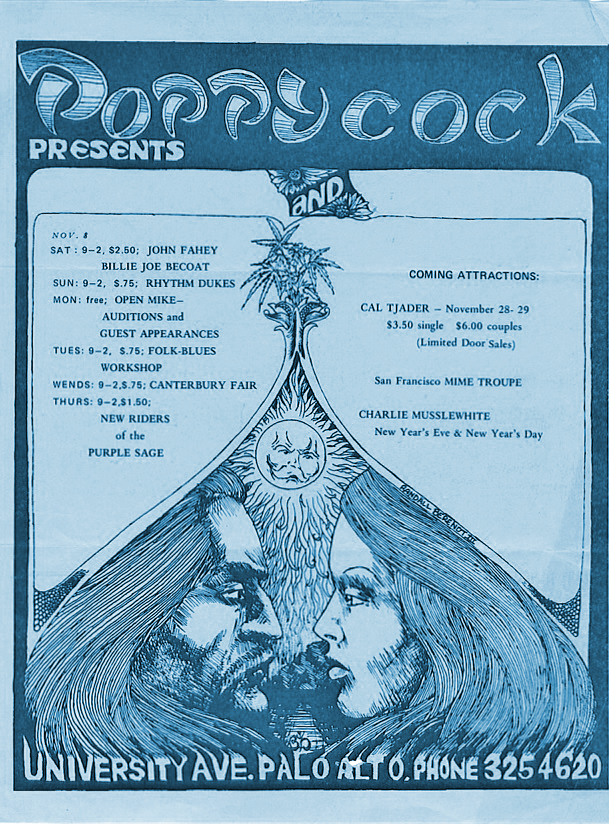 ctions in terms of their quality. However in terms of style, the brief Snowdrops (for Robert Walser) is more subdued than the rest of the album which is pretty upbeat on the whole. No favourites then, although I must admit to having a particular soft spot for “A Lark in Earnest” which makes me want to dust off my own 5-string banjo and see if I can recall those first few bars of “Duelling Banjos” I once mastered (but, alas, nothing else). Both immaculately constructed and executed, this is a fine reference point for students and aficionados alike and comes with the added bonus of some detailed yet readable liner notes and lots of photos of Glenn having a manicure (!)
ctions in terms of their quality. However in terms of style, the brief Snowdrops (for Robert Walser) is more subdued than the rest of the album which is pretty upbeat on the whole. No favourites then, although I must admit to having a particular soft spot for “A Lark in Earnest” which makes me want to dust off my own 5-string banjo and see if I can recall those first few bars of “Duelling Banjos” I once mastered (but, alas, nothing else). Both immaculately constructed and executed, this is a fine reference point for students and aficionados alike and comes with the added bonus of some detailed yet readable liner notes and lots of photos of Glenn having a manicure (!)
“Ring around the Land” (Cedarwood Records CEDAR13) by Birmingham duo Red Shoes are an altogether different acoustic/roots prospect to the afore-featured Glenn Jones. Comprising of spouses Carolyn and Mark Evans, Red Shoes lend the impression of being a more sanitised and media friendly Richard and Linda Thompson. Except for Dave Swarbrick’s “White Dress” the songs are all self-penned and mostly feature the clean and pleasant lead vocal of Carolyn Evans. The exceptions are the upbeat, countrified “Something Wicked This Way Comes” and on “Keep a Hold on Me” on which husband Mark takes over main mic duties. Aided and abetted by a cast of backing musicians including Fairport stalwart Dave Pegg, who also fulfils production duties (the album was recorded at Fairport’s favourite studio at Banbury in Oxon), there is nothing much to dislike about this collection of mainstream, adult-orientated songs in the folk-lite tradition. I’ve no idea if Red Shoes have been featured on Mike Harding’s “Folk on 2” on Radio 2 but if not then a call from the producer is probably overdue.
Two of the most curious, not to mention curiously enjoyable offerings this month come courtesy of French outfit Aquaserge. Recorded in 2005 and 2009, and made up of several pieces that have seen the light of day in other guises “Un & Deux”(no catalogue details) is avant-psychedelic-jazz-rock/pop of some inventiveness and no little beauty, and a sound that is at once typically French and yet could easily be found within the canon of such as Gorky’s Zygotic Mynci or Super Furry Animals. Not surprisingly there are also traces of Stereolab somewhere in the mix, given that at least one of the band members plays with them also. However this could also fit as snug as a cigarette paper in between the sheets of Canterbury Sound jazz-rock and is reminiscent of mid period Soft Machine as well as any number of similarly inclined experimental rockers of the early to mid 1970s. The track “Welcome” is pure 60s freakbeat (marred only by some woefully and I expect wilfully executed out of tune caterwauling). “Deux” is in fact the EP “Tahiti Coco” and which has been doing the rounds for some time now. First track “La Femme De Tahiti” is a delightful fusion of their typically muted vocals, that Sterolab/Soundcarriers sound with the Crazy World of Arthur Brown, which all sounds a bit like an over-inquisitive “press this and see what comes out” approach but works astoundingly well. Like, crazy, Maaan! “Clocclo” is the second helping here and for some reason reminds me of King C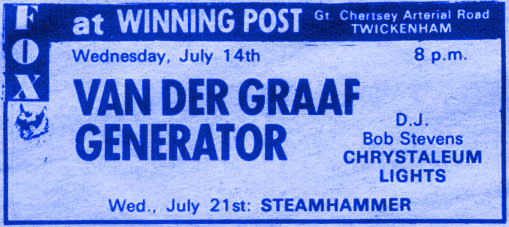 rimson on a cultural exchange trip with Van Der Graaf Generator with Robert Wyatt doing some improvised scat singing through a duvet. Honestly it’s that good. “Mon Capitaine” brings us in to dock and is another fine example of sonic inventiveness, and juxtaposition of the understated and the exquisitely over the top, this time with a neat funky twist.
rimson on a cultural exchange trip with Van Der Graaf Generator with Robert Wyatt doing some improvised scat singing through a duvet. Honestly it’s that good. “Mon Capitaine” brings us in to dock and is another fine example of sonic inventiveness, and juxtaposition of the understated and the exquisitely over the top, this time with a neat funky twist.
If all that wasn’t enough then why not try “Ce Tres Cher Serge, Special Origines” (Manimal Records mani-023) a concept album which reads a bit like an existentialist undersea thriller which if ever it was filmed would play to audiences numbering no more than nine at 3 a.m. showing in some festival tent. If anything then this is even more off the wall than “Un & Deux” (which I ought to have mentioned also seemed to have a nautical theme of sorts – I guess the giveaway really is the band name!). It all starts off with some harmonious plainsong before morphing into experimental, almost free jazz territory of the sort that might have once seen Aquaserge plying their trade on the BYG/Actuel label. The general eccentricity earns further credentials due to the involvement of Acid Mother’s Temple’s Makoto Kawabata and certain passages that sound like they could have been lifted straight from the Mothers of Invention. In all this is more of the same beguiling not to mention mesmerising experimental genre hopping that can be found on “Un & Deux”. It’s all very interesting and great fun, and definitely worthy of (undersea?) exploration.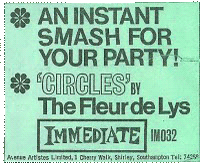
There might not be too many analogies to make between Terrascope Online and some of the top teams in the English Premiership Football (Soccer) League. However imagine if you will the twenty or so artists reviewed here as squad players and then consider the fact that you can count on the fingers of Django Reinhardt’s left hand how many are from the UK then this month’s batch pretty much equates to yer Arsenal. However, if the lack of quantity gives cause for reflection, fear not for the quality, because Perhaps Contraption has just torn up the form book with “Sludge and Tripe”. Hailing from London and rejoicing in names probably not referred to around the parental dinner table, such as Squire Squier, Dildo Window and Plimmy “Goodgirls” Mayfair on bass and vocals, “Sludge and Tripe” is jaw-dropping stuff that excites; delights and disturbs in equal measure. Jack-knifing between the abrasiveness of Birthday Party and Gallon Drunk, the left-field inventiveness of Beefheart and Zappa, the music hall grotesque of Tiger Lillies, knockabout flute salads reminiscent of pixie-era Gong, the jazz artistry of Henry Cow the operatic heavy metal of System of a Down and a touch of good old English whimsy, “Sludge and Tripe” is an exhilarating distillation of the innovative, the dextrous and the downright clever. Of course in the wrong hands innovative and dextrous can easily prove to be pretentious and irksome (conceptual progressive rock, the Mahavishnu Orchestra et al) and clever all too often turns into clever-clogs (10cc). However this miraculously avoids these dangerous but inviting pitfalls and is something of a revelation. Think “Frances the Mute” by The Mars Volta and you’d be close. Then brand its backside and run it screaming through a hall of mirrors and you’d be warmer still. This has to be the best album I’ve heard by a “new” British band (leastways one I’ve never heard of before) for a long w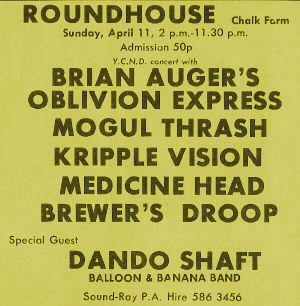 hile. So stop what you’re doing now, immerse yourself in “Sludge and Tripe” and make these good people the big, big stars they deserve to be.
hile. So stop what you’re doing now, immerse yourself in “Sludge and Tripe” and make these good people the big, big stars they deserve to be.
www.perhapscontraption.com
www.myspace.com/perhapscontraption
Clear Spot in the Netherlands are to thank for sending us “Feelings and Fairytales” (Excalibur XCALMG0901) by Anneke Konings. Subtitled “A Delightful Chapter in Dutch Pop History” this compilation showcases what it meant to be Konings’ best work from her 1972 album “Feelings” and 1975 Dutch language album “Tussen Zon En Maan” together with single tracks. The cuts from “Feelings” are a mixture of self-penned songs and cover versions. They reveal a light pop/folk sensibility very much rooted in the late 1960s that it at time times reminiscent of a vaguely psychedelic and slightly troubled Mary Hopkin. Most of this is very much of its time and is a perfectly listenable if mostly unremarkable brand of light and introspective balladry enlivened by the occasional exhibition of rockier tendencies. The pick of the bunch include Konings’ “For You” and her cover of Jesse Winchester’s “Skip Rope Song”. By 1975 she had reverted to her native language and the resulting album is marginally the stronger and more focussed of the two, with a more overt folk sound and is bookended by “Zon” (Sun) and “Maan” (Moon) – essentially Stephen Stills’ “Find the Cost of Freedom” with Dutch lyrics. Worth a listen but may not float too many Terrascopic boats
The title of Hannis Brown’s “Oh Ah Ee” (self released) hints at a Charles Mingus influence and in truth there is more than a nod towards the great jazzer in these 13 impressively singular compositional pieces, of which my personal favourite are the frenetically enjoyable “Never K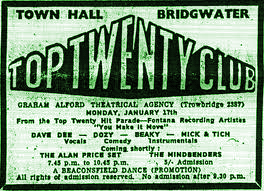 now Where I Am Going” and the Soundcarriers-style beauty of “Eyes Closed” (which in typically perverse style gets a rude awakening before reverting to lullaby loveliness), as well as the Mingus meets Robert Wyatt meets Wes Montgomery “Nothing I Know”. Fans of experimental jazz, free-form composition (many of the instruments Brown plays are household implements) and Dirty Projectors may well find this rewarding, and I’m headed for another listen.
now Where I Am Going” and the Soundcarriers-style beauty of “Eyes Closed” (which in typically perverse style gets a rude awakening before reverting to lullaby loveliness), as well as the Mingus meets Robert Wyatt meets Wes Montgomery “Nothing I Know”. Fans of experimental jazz, free-form composition (many of the instruments Brown plays are household implements) and Dirty Projectors may well find this rewarding, and I’m headed for another listen.
”Home (Here)” the EP by Big Tree (another one courtesy of Team Clermont) is another band with a jazz pedigree and who play multi-faceted music encompassing modal jazz, expressive harmonies, strong rhythms and clever time signatures. Whilst the vocalisation on track 1 (“The Concurrence of Things”) smacks a bit of the over exuberance of a show tune (and show tunes have no business being heard outside of the context of the shows) there’s nothing to fault either the angular title track or the mellower jazz vibe of “Woods”. This is an accomplished and confident showing from Big Tree that whet’s the appetite for their full length release from 2008.
Jesse Olsen is a San Francisco Bay Area based composer and multi-instrumentalist. His album “Ojito” (Deconstruct My House DMH 01) is a lo-fi collection of field recordings made in the desert near Olsen’s home, and augmented by sparse acoustic accompaniment, toy instruments and found objects over which surreal lyrics delivered in a reedy and at times child-like voice. In places this works well, such as on songs like “Creature” and at other times it seems incredibly hard going. It’s very much a curate’s  egg as far as I am concerned but you have to admire Olsen’s endeavour, and your perseverance may well pay off to the point that “Ojito”’s peculiar if somewhat acquired charm begins to rub off on you.
egg as far as I am concerned but you have to admire Olsen’s endeavour, and your perseverance may well pay off to the point that “Ojito”’s peculiar if somewhat acquired charm begins to rub off on you.
Over now to Steve Palmer to see us through to the close...
The record label Dying For Bad Music has sent the good burghers of Terrascope three of their releases, the first of which is the "Least Carpet EP" by Least Carpet. These eight short tracks - presented in an extraordinary multiply-folded yellow circular wrapper - hint at psychedelic folk, with bouzoukis, drones, mandolins and softly fuzzed guitars. 'The Goat Horn' and 'Haystacks' evoke nostalgic days of yore, while 'The Flying Carriage' has a golden '69 Floyd feel to it; and very nice too. 'Rivers' is more electric, fuzzed and delayed as if heard from the edge of a cosmic festival. 'A Narrow Path' returns us to the Floydesque balladry, while 'Old Wedding Song' and 'Leaving' have an English folk feel to them. This is very enjoyable music, evocative, and perfect for a warm summer morning. Fans of The Family Elan (reviewed last time) would love this.
(www.dyingforbadmusic.com/least-carpet)
"You Keep Them" by Low-Fye (that band name being a pointer to the contents) is the work of Tom Hayes, a singer songwriter from North Wales whose songs - start/stop clicks, hiss and all - are recorded on this album. Although not entirely one-man-and-his-guitar (there are overdubbed backing vocals for instance), the feel is lo-fi, though never overtly so. Most tracks clock in at a couple of minutes. 'And I' is mournful, while 'Smoking On An Empty Stomach' and 'Vein' remind the listener of artists such as The Child Readers. Tracks like 'Known To Crush' inevitably evoke Gorkys Zygotic Mynci, whose brand of idiosyncratic Cambrian psychedelia must have influenced this musician. One of the highlights of the album is 'Drowsy', with its strong melody and strange lo-fi/hi-fi production. 'Neuropathy' evokes the kind of delightful bucolica pioneered by Dave Gilmour in the late 'sixties, while 'The Click', with its great vocal performance, is another strong cut. 'Symptoms' is set on a bed of echoed vocal effects, the song then transmogrifying into another Gilmouresque acoustic strum; really nice. 'That Same Bird' is eerily mournful, while album closer 'Voices', short and sweet, merges radio/TV sounds and gorgeous guitar arpeggios. A most intriguing album.
(www.dyingforbadmusic.com/low-fye)
Aalfang Mit Pferdekopf is the nom de plume of one Mirko Uhlig, whose "Is It Possible To Be At War With You?" is a collection of surreal songs in the psych singer-songwriter mode, interspersed with ambient washes. Opening with the helium-manic 'Auf Wasserleichen Gehen', the music calms down a little for the subsequent title track. Uhlig's voice is an acquired taste - echoes of Opeth's Mikael Akerfeld when he's not doing honey-monster vocals - and the production values tick boxes marked "quirky," "idiosyncratic," "random" and "occasionally intrusive," but the album is certainly listenable. The comparatively brief 'Auf Finnisch Klang Mein Alltag Mystisch' is a gorgeous ambient wash of sounds and synths, while the following 'At The Foot Of Rain From Tupelo' is similarly good. 'The Scoop Of A Bee' is a hazy psych-folk canter, while 'Nachtmeerfahrt Eins' is another delicious slice of ambience, enhanced with storm recordings. By far the longest track on the album is the thirteen minute 'Kor Sakta,' which is a spooky peer into a murky ambient world: terrific. The album concludes with a final folky cut 'Chicken Poxes.' A mostly successful effort.
(www.dyingforbadmusic.com/aalfang)
The 3" CD is not something you see very often (I've only ever seen those produced by ambient legend Vidna Obmana), but here are a couple, courtesy of Marcus Obst of the DFBM releases mentioned above. "Fieldpiano" is by Sunslide, a.k.a. UK pianist Nigel Simpson, seven quiet solo pieces backed with location recordings made around Simpson's home town of Felixstowe. Evoking Eno's work, the mood is soft and reflective, and rather lovely. My favourite piece was the sublime third track, with its subtley buzzing synths and impressionistic piano. I'm uncertain as to the point of the noisy final track, but, that apart, this is a notable release.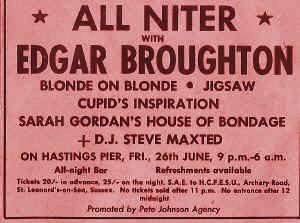
(www.fieldmuzick.net/sunslide)
"The Travelling Guild" by French artist Imagho is in the vein of the above work, matching quiet music, this time on acoustic guitar, with environmental sounds; it also is contained on a 3" CD. Imagho tries to match the mood of his playing with the environment; as he himself explains, these are aural snapshots, capturing unrepeatable moments. The simple playing is best on the two pieces recorded in an unused church in the department of Lot. Another fine, gentle release.
(www.fieldmuzick.net/sunslide)
Debut albums are welcome and interesting, and the eponymous release of Boston's psychedelic garage band The Freeways can certainly be so described. Taking one part vintage pop-psych, one part garage thrash and one part US road trip, the album conceptually journeys from east to west, beginning basic and fuzzed-out with tracks 'Whenever You Want Me' and 'I'll Take It,' before progressing to more swirly fare like their cover of The Warlocks' 'Shake The Dope Out.' Karen Zanes' light voice contrasts with the buzzing guitars and battered drums, but on the quieter 'Country' she is given more space to emote, alongside a tasteful Hammond organ - an album highlight, this cut. 'Casa Loma' again has a more West Coast feel, with particularly evocative guitars. Groovy track 'Glass Eye' really digs the vintage vibe, while the superb concluding cut 'End Of Summer' is a joy. The latter songs rather outshine the former, but this is nonetheless a good release.
(www.myspace.com/thefreeways)
Moral Crayfish are two musicians from Pennsylvania, Dan Cohoon (the founding member of the project) and, on "Go To Church & The Crooked Shoe," a document of two live recordings, Scott Verrastro. Dan plays prepared guitar and Scott various items of percussion. The music opens with hulking great chords of guitar and feedback, to which Scott adds subtleties of percussion. It's an impressive sound. The first three tracks on the disk document an unedited live recording at th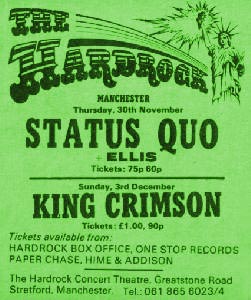 e First Unitarian Church in Philadelphia, while the second is a performance made at the Crooked Shoe venue in Philly - and it is this second work that really send the disk into space. Feedback and droning chords crash against live drums, and there is what sounds like a (barely audible) undercurrent of audience chatter that adds atmosphere to the recording. It's the sort of music you begin thinking is ambient, but really it's too dark and challenging for that name. Good stuff throughout, with part four of the second piece containing some particularly bonkers playing.
e First Unitarian Church in Philadelphia, while the second is a performance made at the Crooked Shoe venue in Philly - and it is this second work that really send the disk into space. Feedback and droning chords crash against live drums, and there is what sounds like a (barely audible) undercurrent of audience chatter that adds atmosphere to the recording. It's the sort of music you begin thinking is ambient, but really it's too dark and challenging for that name. Good stuff throughout, with part four of the second piece containing some particularly bonkers playing.
(www.myspace.com/moralcrayfish)
And so, dear reader, to three releases from the Palace Of Lights label, the first being "Subterrane" by electroacoustician Marc Barreca, which is an extraordinary album indeed. Opening with a slowly mutating drone, dozens of miniscule samples, loops, ever-changing sections of field recordings, and the unidentifiable audio debris of various acoustic instruments are layered in a never-repeating mix. With the exception of the twelve minute second track (a masterpiece, I would suggest), most cuts here are a few minutes long: the electro-twinkle of the title track, the ethnic melange of 'Glimmerglass' - which reminded me of Jon Hassell's "Aka Darbari Java" - the loping organ chords of 'Jumbled,' and the stridulating glissando delights of 'Twilight Reprise.' Very fine listening indeed, and recommended to all those into the avante garde, ambient or electronica.
(www.palaceoflights.com)
K. Leimer - whose "Lesser Epitomes" I really enjoyed in 2008 - assisted in the recording of Barreca's opus, and the second offering from the palace is his new album "Degraded Certainties." Six tracks of almost exactly twelve minutes each occupy this disk. The opener 'Angoisse' hovers bell tones, tinkling sounds and random signals and notes over a droning chord, to mesmerising effect. Leimer's skill is the creation of beauty from simple sources, creating effortless complexity. 'Hommage' follows the same route but with a different sound palette, while 'Paper Telephone' has a foundation of string sounds, over which faint and subtle sounds float. Some of the looping sounds of 'Allotropy' sound like a cross between a flute mellotron and a violin, and they are highlighted by bass and backwards sounds: a ravishing mix, and the best track on the album. 'Common Nocturne' takes the piano as its foundation for a few quiet moments, while the closing cut 'French Opera' uses a deep drone to highlight its tapestry of plucked strings and backwards sounds. Kerry Leimer is an outstanding musician, and this is an outstanding album.
(www.palaceoflights.com)
The final work of this trio is "Dua_Belas" by Gregory Taylor, who assisted in the creation of the above album. Taylor's sound, unlike that of the other two musicians, is more akin to electronica than the soft, floating tones and shifting textures of Leimer and Barreca. One thinks of FSOL's Environments series, and the American minimalists, evoked by the looping sequences and tones of Taylor's electronic sculptures. 'Andreas' sounds like early 'eighties Tangerine Dream in places, and sets the tone for a superb album, while the loops of 'Simon_Petrus' very much evoke the early work of Terry Riley, adding harsher, more modern sounds to the mix. Later tracks sound like feedback cut-ups, looped samples endlessly mutated, Balinese ambience, and neo-classical whimsicality. 'Matius,' an album highlight, is a great, dense slab of orchestrated sound and faux-Balinese twinkling, while 'Anak_Kember_Tomas' comes across as a lost portion of the soundtrack to the film "Alien." The eleven minute mini-epic 'Simon_Si_Patriot' opens doomy and Schulze-esque before entering a kind of analogue hell in which low-end warning synths compete with atmospheric noise: a fantastic track with great atmosphere. The final cut concludes the album with distorted organ sounds. Another outstanding listen. Fans of ambient music, electronica, Berlin and Kosmische electronic and synth music should check out these releases from an important label. All three are highly recommended.
(www.palaceoflights.com)
And so from the sublime to the progressive. (I'm joking, don't worry.) Opening a quartet of disks courtesy of Shadoks Music, "Trubrot" by Iceland's first supergroup Trubrot is a kind of Scandinavian version of The Nice, or Refu gee if your taste extends to Patrick Moraz. Sung in Icelandic of course, the lyrics are impenetrable, but the music certainly is not. Blending Hammond-soaked rockers with more folky fare (eg. the lovely 'Frelsi Andans') the album covers proto-progressive work, whimsical late 'sixties stompers and acoustic folk, some of which evokes King Crimson's early pastoral cuts. It's a lovely listen, with the male/female vocals working really well, while Karl Sighvatsson's organ playing is superb. Shadoks must be complimented on the sound quality and the high quality booklet; and they are releasing the subsequent Trubrot albums. Meanwhile, also in Iceland, but recorded in England and sung in English, prog-rockers Svanfridur were cooking up an early 'seventies progressive brew entitled "What's Hidden Here?" It would be their only album - here it is remastered by Shadoks with, again, an extensive accompanying booklet. Opening rocker 'The Woman Of Our Day' comes over like Cream-lite, but then it's 'The Mug' which opens with piano and pattering drums only to morph into what sounds like a lost Bowie track: extraordinary. Superb harmony singing and great playing (bass especially) make this a terrific listen. What must have been a very early Moog synth also appears; these guys were ahead of their time. Violins accent the stomping 'Please Bend,' while the title track is mournful song also accompanied by violin. The instrumental 'Did You Find It?' utilises that early Moog to great effect, evoking classic Bo Hansson material from the same era, while later tracks return the listener to the signature heavy/progressive sound - a kind of Sabbath-lite with Cream influences. Great stuff, not least the phased/Moogy penultimate cut. Fans of Astra would like this one. I loved it. John And Philipa Cooper, meanwhile, were a South African brother and sister who cut one album "Cooperville Times." The opening cut sounds remarkably like 'Wishing Well' by Free, except with a harmonised 'sixties vocal sound. Subsequent songs echo Blossom Toes and their late 'sixties ilk, and will fascinate fans of the era. This is perhaps not the strongest of these Shadoks releases, but it is interesting, with highlights including the whimsical baroque pop of 'Wild Daydreams,' the Donovan-like rocking 'Man In A Bowler Hat' and 'She's My Woman,' which marries a sha-la-la chorus with classic 'sixties guitars. A small amount of distortion suggests this CD rerelease has been transferred from what is described as the rarest South African record ever, but generally this is not a problem. Investigate if you love the rarer 'sixties. Finally, a return to Iceland in the form of Odmenn, who were progressive before their time. Essentially a blues-rock quartet boasting four excellent musicians, the band only cut one album, "Odmenn," which is a double album of fifteen tracks. Singing in Icelandic, the nature of the lyrics is unclear (except one track 'It Takes Love'), but apparently there were protest songs amidst more mellow verbal fare. The music is superb: tight, complex, with particularly fine drumming from Engilbert Jensen. Eirirkur Johannsson's lead guitar is also great. A Hammond organ enlivens some of the cuts, while a few echo 'sixties sounds, indicating the band's roots in 1966. Not all the tracks are bluesy rockers; 'Minningar' is slow and impressionistic while 'Stund' is almost poppy. The final cut is what must have been an entire side of vinyl on the original release, a nineteen minute odyssey into guitar histrionics, blues jamming with some particularly mad guitar playing, phased drum solos, etc. It's instrumental and comes across in places like early Yes, elsewhere more like Cream. An amazing track. Kudos to Shadoks Music for these four releases.
gee if your taste extends to Patrick Moraz. Sung in Icelandic of course, the lyrics are impenetrable, but the music certainly is not. Blending Hammond-soaked rockers with more folky fare (eg. the lovely 'Frelsi Andans') the album covers proto-progressive work, whimsical late 'sixties stompers and acoustic folk, some of which evokes King Crimson's early pastoral cuts. It's a lovely listen, with the male/female vocals working really well, while Karl Sighvatsson's organ playing is superb. Shadoks must be complimented on the sound quality and the high quality booklet; and they are releasing the subsequent Trubrot albums. Meanwhile, also in Iceland, but recorded in England and sung in English, prog-rockers Svanfridur were cooking up an early 'seventies progressive brew entitled "What's Hidden Here?" It would be their only album - here it is remastered by Shadoks with, again, an extensive accompanying booklet. Opening rocker 'The Woman Of Our Day' comes over like Cream-lite, but then it's 'The Mug' which opens with piano and pattering drums only to morph into what sounds like a lost Bowie track: extraordinary. Superb harmony singing and great playing (bass especially) make this a terrific listen. What must have been a very early Moog synth also appears; these guys were ahead of their time. Violins accent the stomping 'Please Bend,' while the title track is mournful song also accompanied by violin. The instrumental 'Did You Find It?' utilises that early Moog to great effect, evoking classic Bo Hansson material from the same era, while later tracks return the listener to the signature heavy/progressive sound - a kind of Sabbath-lite with Cream influences. Great stuff, not least the phased/Moogy penultimate cut. Fans of Astra would like this one. I loved it. John And Philipa Cooper, meanwhile, were a South African brother and sister who cut one album "Cooperville Times." The opening cut sounds remarkably like 'Wishing Well' by Free, except with a harmonised 'sixties vocal sound. Subsequent songs echo Blossom Toes and their late 'sixties ilk, and will fascinate fans of the era. This is perhaps not the strongest of these Shadoks releases, but it is interesting, with highlights including the whimsical baroque pop of 'Wild Daydreams,' the Donovan-like rocking 'Man In A Bowler Hat' and 'She's My Woman,' which marries a sha-la-la chorus with classic 'sixties guitars. A small amount of distortion suggests this CD rerelease has been transferred from what is described as the rarest South African record ever, but generally this is not a problem. Investigate if you love the rarer 'sixties. Finally, a return to Iceland in the form of Odmenn, who were progressive before their time. Essentially a blues-rock quartet boasting four excellent musicians, the band only cut one album, "Odmenn," which is a double album of fifteen tracks. Singing in Icelandic, the nature of the lyrics is unclear (except one track 'It Takes Love'), but apparently there were protest songs amidst more mellow verbal fare. The music is superb: tight, complex, with particularly fine drumming from Engilbert Jensen. Eirirkur Johannsson's lead guitar is also great. A Hammond organ enlivens some of the cuts, while a few echo 'sixties sounds, indicating the band's roots in 1966. Not all the tracks are bluesy rockers; 'Minningar' is slow and impressionistic while 'Stund' is almost poppy. The final cut is what must have been an entire side of vinyl on the original release, a nineteen minute odyssey into guitar histrionics, blues jamming with some particularly mad guitar playing, phased drum solos, etc. It's instrumental and comes across in places like early Yes, elsewhere more like Cream. An amazing track. Kudos to Shadoks Music for these four releases.
(www.normal-records.com)
Marianne Segal was a member of legendary folk-rockers Jade, whose star shone bright in their early 'seventies heyday. Since leaving that band this singer-songwriter, possessed of a gorgeous voice and undeniable songwriting talent, has been out of the public eye, but now Snow Beach Recordings have issued her "Gypsy Girl: Archives 70s, 80s & 90s Vol. 1," which presents the listener with a variety of material from those decades. Supported by well regarded musicians from such bands as Gryphon, Fairport Convention and Jade, Segal's voice has hints of Annie Lennox, while the arrangements vary between Enya-style and more traditional. 'Hello Pepe' and 'On A Distant Shore' immediately present a powerful, emotive voice and strong songs, while the title track has a memorable melody. 'Shan't Dance' reminds of Renaissance, while the harp and bells on 'How Long' give it a new-age feel. 'River And Stream' is recent (1990) in plaintive singer-songwriter style, with a wonderful guitar accompaniment from Graeme Taylor, while 'Kiss Of The Buddha' is an earlier attempt at pop. 'So So Scorpio' most clearly evokes Lennox in vocal tone (no bad thing of course) whilst retaining Segal's own unique phrasing. The slew of 'seventies cuts that follow, including live track 'Ben,' all illustrate Se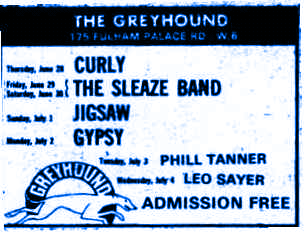 gal's compositional talent, not least the big-sounding production of 'Miranda.' Closing track 'The Moon And I' marries a tremendous vocal with subtle keyboard backing. This album is testament to a talent that we are the poorer for having lost for so long. Volume 2 must surely offer many more gems.
gal's compositional talent, not least the big-sounding production of 'Miranda.' Closing track 'The Moon And I' marries a tremendous vocal with subtle keyboard backing. This album is testament to a talent that we are the poorer for having lost for so long. Volume 2 must surely offer many more gems.
(www.mariannesegal-jade.com)
If Tangerine Dream, Klaus Schulze and early Jean-Michel Jarre are your thing (and, believe me, they really should be) then you will love the new release "Proxima" by Black Tempest, a.k.a. Stephen Bradbury. Combining the best of analogue sequencing with drifting chords, vintage synth effects and tasteful guitars and bass, I loved this. Split into three sections covering 52 minutes, the album takes all the best bits of the Berlin School and reworks those parts into analogue heaven; specifically that provided by Moog, Doepfer and Roland. The sequences don't outstay their welcome, as can be the case with new BS material, and the overall form of the three compositions is very pleasing. Electric guitar parts are subtle and don't (as could be the case with a certain Mr Froese) overwhelm the tracks. I suppose "Phaedra" would be the nearest sonic comparison. This album will be receiving regular play at Palmer Towers.
(www.myspace.com/blacktempest1)
Also on the Apollolaan Records label comes "From The Moat" by Stormhat, a.k.a. Peter Bach Nicolaisen. This one is much more avante garde that Bradbury's opus, and is best described as experimental, merging field recordings with fragments of found sound, noise and (perhaps) some synths and samplers. The mood of the opening cut is eerie, like alien noises from some far away pasture, and subsequent tracks follow this pattern, to similar effect. Sometimes the minimal noise-scapes are spooky; elsewhere, as on the fifth track, where bell sounds and massed noises merge, the effect is darker and more intense. It's a curious, sometimes disorientating listen, but it's never less than intriguing and some passages, notably on that fifth track, become quite lovely.
(www.stormhat.dk)
5-Track & Glass Goblins' "Lost Soul Island" comprises a number of drums, bass, guitar 'n' vocals rock cuts, the tracks evoking spacerock jammers such as Acid Mothers Temple and Phish, while reminding the listener also of some of the Velvet Underground's work. Slow, hazy songs such as 'Space Angel,' 'Kira' (echoes of Hendrix) and 'Godless Weather' groove in an inescapable way, while the closer 'Can't Find The Ocean' marries riff-tastic guitar with garage bass and drums. One for Deadheads expanding out from Haight-Ashbury perhaps.
(www.cosmicprimitive.com)
"Nine Doors" by the Levenshulme Bicycle Orchestra is pitched somewhere between spoken word performance art and Faust-like improvised jamming on non-musical instruments. The images and feel are unremitingly gloomy, and occasionally what might be termed post-apocalyptic. The strongest tracks are those where musicality comes through, eg. 'Oil Film.' Not the easiest listen and probably best experienced live.
(www.concretemoniker.co.uk)
Considerably less noisy is "Grimpen Mire" by Graham, an album of quiet instrumental ambience from Portland, Maine. Opening with a steady thrum of white noise, reverberated chords and soft, slow notes billowing over the top of this foundation, the music is slow and minimal in classic Eno mode. And it's rather good. You have to have a certain strength of vision to make this kind of music work, and Graham has it. The second of the two "untitled" tracks opens with a massive organ chord and bass drone, which slowly resolves and fades. 'Titled' (Graham uses ironic track names) brings in a rhythmic element, and also piano notes that hover over the base. 'Those Who Stole The Most Gold Drowned' is another long drawn-out chord with subtle overtones and eerie sounds, and the album closes with a final cut in the "untitled" series. Excellent ambience for q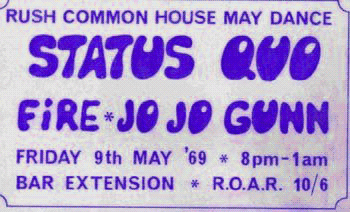 uiet moments, and one for repeated plays.
uiet moments, and one for repeated plays.
(www.teafirstrecords.com)
"Fire In The Whole" by Plastic Crimewave is a set of thirteen demos. The style is primitive, the recording lo-fi, the singing mostly indecipherable, the playing idiosyncratic. With one exception each of the tracks clocks in at around two minutes. A certain amount of work will need to be done on this before the final album is ready.
(www.apollolaan.co.uk)
The self-titled disk of freeform psychedelic jams by The Rrreverberationsss is an EP of four tracks recorded live in classic drums, bass and wailing guitars mode. The playing is great, the band noisy and freaked out, the atmosphere strong. The first cut 'Black Friday Gas Chamber' is short and heavy, while the second, 'Nothing Ever Felt So Real,' is a little slower with dual guitars and trippy vocals, ending in a kind of lurching hyper-jam. 'Green Fuzz,' a brief third track of stoner proportions, interjects itself before 'Heavy Snow,' the closing eleven minute cut of slow, dense jamming. A band with potential for sure, with hints of Hawkwind, Litmus and Astra in the mix.
(barrett.jones@gmail.com)
Son Of The Sun hail from New York state, here presenting their debut full-length album "The Happy Loss." With hints of psych and garage, the album mixes strong tunes, good tight/loose playing (as the songs require) and a clear recording. There are hints of Band Of Horses (notably the classic "Everything All The Time") although Zak Ward has a very different vocal style. Opening cut 'The Good Ole Days' is garagey, but 'The Other Side' reveals a more subtle side, and 'How Can It Be' showcases the backing vocal style and additional instrumentation that brings so much to the mix. 'Leopard Print' - an album highlight - shows the band's mastery of melody, form and instrumentation, while 'Get Together' is more of a stomper, again with a great tune. 'Keys (Last Call)' has a hazy 'sixties feel to it, returning the band to the garage influences, and features some great guitar playing and a nice breakdown/comeback section. 'April Fools' is slow and melancholy but builds to anthemic proportions - really good - while 'The Franklin' is a quirky little number. 'Stay The Same' opens like 'My Sharona' before heading into garage territory, while album closer 'Tell Me' opens quiet and ends big and bold. A sophisticated debut release with much to recommend it.
(www.sonofthesunmusic.com)
Fans of trad folk will certainly want to check out "The Hind Wheels Of Bad Luck" by Cath & Phil Tyler, who hail from northern Britain. Eleven compositions, most of them traditional, make up this great little album. Recorded with minimal instrumentation during a long weekend, Phil Tyler's sparse playing accents Cath's confident vocals. The melodies are the couple's, the lyrics mostly unearthed from collections and song books. 'Dearest Dear' and 'Imaginary Trouble' are strong openers, while the instrumental 'Whip Poor Will' is charming and beautifully played (on what sounds like a fab guitar). I particularly liked the lengthy 'Golden Ace/Courting Is A Pleasure', which contrast to perfection. The blink-and-you-miss-it 'The Wind That Shakes The Barley' fingerpicks and rolls, before 'Castle By The Sea' and 'Long Time Travelling' conclude the album. As has been pointed out by other reviewers, this duo's combination of delivery, choice of song and sheer style make them a major force. Highly recommended.
(nofilive@googlemail.com)
"Divine Cantos" by Marianne Nowottny is a dark and perplexing interpretation of six sections of Dante's 'La Divina Commedia.' To a backing of deep, resonant keyboards, occasional lighter instrumentation and dulcimer, Nowottny's intense, almost overpowering vocals bring us brief snapshots of Dante's literary classic. 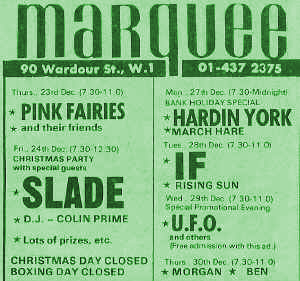 The vocals on the concluding two tracks are lighter however, appropriately, as the text deals with Paradise, and are easier on the ear than those gloom-laden opening cuts. A strange, forboding, but ultimately positive release.
The vocals on the concluding two tracks are lighter however, appropriately, as the text deals with Paradise, and are easier on the ear than those gloom-laden opening cuts. A strange, forboding, but ultimately positive release.
(www.abatonbookcompany.com)
Backseat Dreamer is the nom de plume of US electro-kid Sean Neuse, whose "The Colours Of Dreams, They're In You" comes over as a kind of New Order-esque drum machine-rooted pop collection - think Maps especially, but also a stripped back Caribou. Dreamy vocals lie heavily reverberated over swirling, string-rooted keyboards, while bass drums thunk and hi-hats scratch and phase. The synths on 'Blind Science' are good, while 'Real Inside You' has a bouncy vibe. I also liked the dense 'Twilight Valentines' and the title track. A little more audio variety would not have gone amiss however: lacking the melodic originality of that classic first Maps release, and missing some of the sonic imagination of Dan Snaith, this is nonetheless an attractive release, that could find its audience amongst fans of M83, Digitalism and Maps. One final point: the album has been either mixed or more likely mastered with far too much compression, making it difficult to listen to in places.
(www.myspace.com/backseatdreamer)
"Leaves Of Grass" by Dirt Weed Review returns us to the world of drifting synths, noise and prepared guitars. It's dense, intense, crazy and mostly formless. Veering between avante garde crashing noise, looped and delayed guitar thrums, but occasionally moving into spacey random-note moments, the music battles your eardrums - but in an interesting way. One for fans of Moral Crayfish.
(www.myspace.com/dirtweedreview)
Meanwhile, back in the crazy world of Apollolaan Recordings, we stumble across Spaceship - essentially astral synth traveller Mark Williamson - and his album "Out Of Time's Abyss." Skewed and violent guitar/bass parts clash with synth noise weirdry and bass drones so malevolent they leap out of the speakers. Another intense listen: 'Chain Movement' is eighteen minutes of Mark sketching the environment of Hell in electronics, while the briefer 'Ranks Of The Horrified' adds plodding drums to the mix - this one sounds like Satan's theme tune, though it calms down a little at the end - while closer 'Traversing The Chiastolite' is cool and rather more like the afterlife... subtle analogue synth playing, electric guitar and an ominous sequenced backing - the best track on an intriguing production.
(www.apollolaan.co.uk)
Peter Delaney, it transpires, is live in Amsterdam. Also on Apollolaan, his eight track EP documents him and his guitars, singing songs of life and all its difficulties to an appreciative audience. With one exception the songs are brief and bittersweet. Delaney's voice can soar high but also has a reedy undertone, reminding one just a little of Michael Stipe. He's a confident singer and never puts a note wrong, while his guitar accompaniment is polished. Highlights include the emotional 'My Eyes Are Blessed' and the eight minute 'The Guest,' which matches world-weary vocals with ukelele accompaniment. 'O, Great Father Ocean' has the depth and power of a traditional song. (It may be - there are no sleeve notes.) A surprisingly affecting and certainly accomplished release.
(www.apollolaan.co.uk)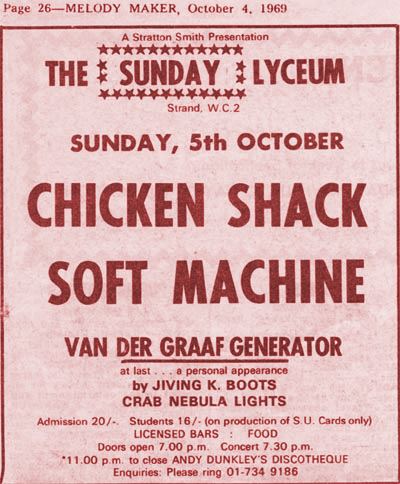
"Tall Shoulders" by Lille is a five track EP of strange and eerie power, written by Atlanta teenager Grace Bellury. Opening with 'Straw,' whose strong melody and spooky instrumentation supports a pure voice, the release continues with 'Robert Cohn,' possibly a song to an ex-lover (these songs have a confessional feel to them) which ends on an almost operatic high. 'Melancholera' is the hit of the EP, with a mesmerising vocal performance. The title track is a brief sugar hit, alternately floating and soaring, before the closing cut, 'Blue Boat Boy,' which is in more traditional rock-pop mode. An amazing new voice has arrived; in places I was reminded of the calmer moments from Joanna Newsom's "Ys". Well produced, original and recommended.
(no contact details - probably best to try Google!)
Singer-songwriter Roger Harvey is the man behind Dandelion Snow, whose "The Grand Scheme Of Things" is a roustabout ten track record of personal experiences over the duration of a year. Opening with the martial and challenging title track, the album presents its travelogue with confidence, if a little over-reliance on standard band instrumentation; and Harvey's voice may be an acquired taste. 'Way Down Low' continues the band-styled approach, with Harvey's voice keening over it all. 'Middle Of Nowhere' bounces attractively, while 'Salt Lake City' does exactly what it says on the tin. 'Wooden Gods' is perhaps the album highlight, with a nice Hammond touch augmenting one of the stronger songs. Fans of the viewpoint of Roger Harvey will doubtless want to check out this release.
(www.dandelionsnow.com)
Warning Light is an American electronic musician by name D. Haddon, whose album "Further On" explores ambient/synth territory, and does it very well. Although comparisons, inevitably, can be made to the pioneering work of Brian Eno, the ten pieces here, while within that oevre of slow and subtle, have textures and mixes nicely balanced, for example on the ocean-slow rise and fall of 'Further On, Monoliths.' 'As The Heavens Fade Out' is darker, more like drone music, while album highlight 'Northern's Requiem' matches church-like synths with sub-bass for an all too brief four minutes. 'Sea Rations,' on the other hand, is almost a quarter of an hour, in which time one massive chord is mutated, stretched, then laid to rest in noise and deep rumbling. Another good release from the Stickfigure label.
(www.stickfigurerecordings.com)
Junkboy consists of two main men from Brighton and Hove, whose new album "Koyo" is a twelve track delight veering between bright-eyed psychedelia and bucolic meandering. Brief acoustic trip 'Firth' opens the collection before 'Home,' in which elements of shoegaze and psych-pop are merged to great effect. 'Friends (part 2)' recalls Brian Wilson, but more so the Wilsonesque stylings of The High Llamas, as does 'Function Of The Sun.' 'Pieces In The Sky' features lovely male/female shared vocals, while 'Dr Rendezvous' changes the mood to something more folky. 'Present' is as light as a feather, while 'Stendahl Syndrome' is a nicely played and arranged waltztime instrumental, with a full band sound. 'Ghosts' sounds like an English Gorky's (specifically, "Spanish Dance Troupe") while 'On The Shore' returns the listener to bucolic territory; especially good harmonised vocals on this cut. 'Let The Light In' has a lovely riff and chord sequence, and a positive vibe. Closing cut 'Tones X' recaptures the earlier Junkboy sound, with great brass ensemble/guitar jousting. Overall, a very good album indeed, which I much enjoyed.
(www.enrapturedrecords.com)
US guitarist M. Mucci plays acoustic guitar, and a few other bits and pieces, on his latest foray "Time Lost." Opening with the solo acoustic piece 'Small Triumphs,' which reminded me just a tiny bit of Steve Hackett's 'Horizon,' further fingerpicked wizardry ensues on 'The View From Here' - superbly played, with a marvellous "travelling" quality. 'The Culprits' is more impressionistic, adding slide before returning to the clawhammer style, while 'April L'Occhi Part 1' is almost ambient, with its slow, isolated notes. 'Chase Down Alice St.' adds percussion for extra drama - it works well - then goes almost into a full band sound. 'Moments Between' is contemplative, before the seven minute extended ramble of 'A Day Like Any Other,' which is not in clawhammer style, features a harmonium, and contrasts well with the rest of the album. Closing cut 'April L'Occhi Part 2' drifts off as did part one. Refreshing, beautifully played, and most enjoyable.
(www.mmucci.com)
Frui ts De Mer Records have offered us psychedelic listeners some treats in recent years, and now present their first full album, "A Phase We're Going Through." Their promo contains only five tracks, but no doubt the album is all as good as this quintet of lovelies. The Luck Of Eden Hall do The Monkees' 'Love Is Only Sleeping,' The Swims do July's 'My Clown,' The Chemistry Set do Del Shannon's 'Silver Birch,' and Cranium Pie do Hendrix's 'Little Wing.' All great versions, with, natch, a lot of phasing. One to acquire if you love the best decade in music, from a quintessential record label... can you see what I did there, Keith & Andy?
ts De Mer Records have offered us psychedelic listeners some treats in recent years, and now present their first full album, "A Phase We're Going Through." Their promo contains only five tracks, but no doubt the album is all as good as this quintet of lovelies. The Luck Of Eden Hall do The Monkees' 'Love Is Only Sleeping,' The Swims do July's 'My Clown,' The Chemistry Set do Del Shannon's 'Silver Birch,' and Cranium Pie do Hendrix's 'Little Wing.' All great versions, with, natch, a lot of phasing. One to acquire if you love the best decade in music, from a quintessential record label... can you see what I did there, Keith & Andy?
(www.myspace.com/fdmer)
And so to a book! The Man Who Provides Goodies - as I like to think of Simon Lewis - has seen fit to offer me review copies of two tomes, the first being Keyboard Magazine's "Classic Rock," a collection of original interviews from the pages of Keyboard. Focussing on players from the 'sixties to the 'eighties, the bulk of the interviews are with 'seventies keyboard wizards, for instance Elton John, Jon Lord and Keith Emerson. The interview with Tony Banks is fascinating, revealing much about the Genesis man's working method in particular, and also the band's as a recording entity. The Elton John piece is similarly interesting. I've always loved those classic early albums by Reg, and this interview lifts the lid on much of interest, not least how other keyboard players fit in with him, and with his style of tinkling the ivories. An absorbing read, and, unsurprisingly, a must for players who want to learn more about how the classic synth and keyboard players have achieved their sounds.
(www.backbeatbooks.com)
Book two is more of a coffee-table read, in equal parts amusing, frustrating and revelatory. Entitled "Venn That Tune" by Andrew Viner, it has a simple premise. On one page is a Venn diagram, chart or graph giving hints to a song title. You have to guess the song. Let me give you an example: a circle with, inside it, two words; stay and go. Outside the circle is written My Options. OK, pretty obvious, it's 'Should I Stay Or Should I Go?' by The Clash. Easy? Well, that was an easy one... some of the others are impossible, and therein lies the cunning plan of Mr Viner, as this innocent looking book becomes something of great frustration - and of course great fun.
(www.vennthattune.com)
So... back to music, and the bonkers world of Apollolaan Recordings. Gish/Perry are purveyors of minimal electronica, whose "I'm Afraid I Ate Too Much Butter As A Youth" is three long tracks of said electronic minimalism. 'The Sandwich Girls Of Belgium' is a long drawn out chord with various recordings and noises laid over the top, while the title track is similar, except with a grittier, dirtier chord. 'Kent' closes the album with location recordings. Not without its merits, though a bit lacking in listenable detail through those extended chords.
(andrew.michael.perry@gmail.com)
On the same label we find 230 Divisadero, whose "The Silent Watcher" is a rather curious collection of six songs: a short album or a long EP. Opener 'Xun Xurtu' matches lugubrious vocals with sparse, often acoustic instrumentation to notable, if strange effect. 'Storm In December' features more quiet vocals, acoustic guitar and effects. The intention is to create mood and timbre; there is little by way of melody, but it does work. 'The Swamp Folk' is quieter still yet full of atmosphere, while 'Gone To Waste' is a melange of stop-start vocals and instruments. 'Maps We Loathe' is an atmospheric instrumental featuring Richard Adams (not the author, I imagine), while closing cut 'The Silent Watcher' is alternately trippy and ambient. Rather good, this release; there's potential here.
(www.myspace.com/230divisadero)
Elsinore make upbeat pop-rock in drums/bass/guitar/vocals style. Hailing from Chicago, they present ten songs on their album "Yes Yes Yes." With vocals sounding a little like Matt Bellamy out of Muse, the arrangements are dramatic, if limited, founded on a standard band style with some backing vocals and keyboards. Opener 'Landlocked' is fast and beaty, while 'In The Sea & Air' is more experimental and pretty good, although those Muse-esque vocals may put some people off. 'Lines' is less faux-operatic - a rather good single in waiting I think - while the lengthier 'Gasoline' is an album highlight with nice production. 'Wooden Houses' closes the album with more Muse-like posing. They're not going to set the world alight, but this album is a solid listen.
(www.elsinoremusic.com)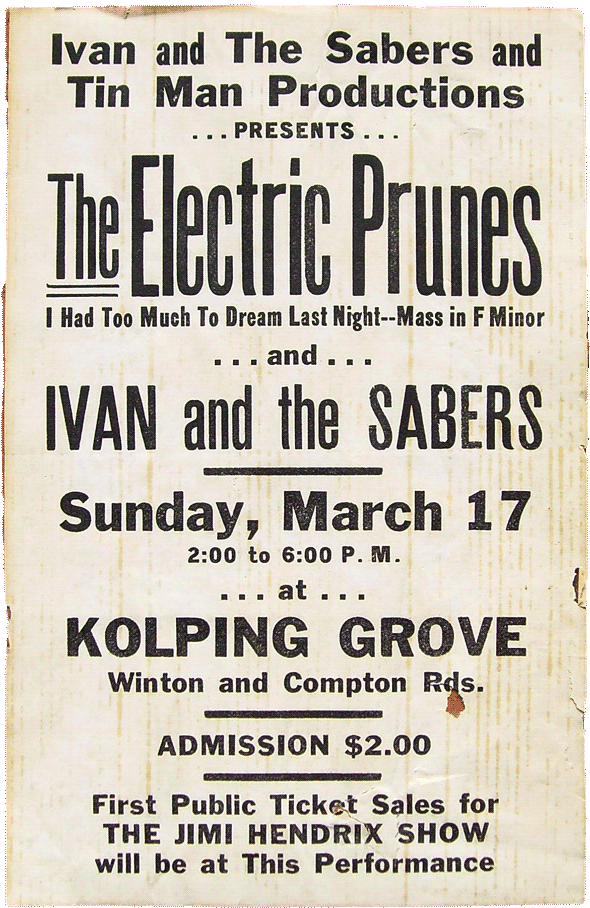
Quiet World is the label of productive ambient musician Ian Holloway, whose "The Earth In Play" is one short track and one long in the company of multi-instrumentalist Darren Tate. The five minute opener matches sea recordings against mystical synth drifts, before it's on to the half hour main track, an enigmatic concoction of single piano notes, ethereal drones and drifting synth chords. Holloway, as his previous releases have shown, has a talent for creating ambience, and this is another fine example. Great for winding down at the end of the day.
(no contact details given)
If you like heavy Dutch space rock then "Into The Multiverse" by Stone Oak Cosmonaut is for you. Sabbath riffing goes against vocals and synth noodling to create a swampy space rock for fans of Hawkwind, Litmus, et al. The band is a trio who recorded the album on a single day. Opener 'She Is My Interstellar Cow' pushes all the buttons mentioned above, while 'Cosmonaut No. 6' is sludge-slow, with doomy vocals. 'Fly Into The Light' is a brief Motorhead-like stomper (with Lemmy vocals!) and then it's off into the thirty-eight minute epic 'Into The Multiverse,' which by turns goes cosmic, metal, electronic/ambient and riffola. The vocals are a bit indistinct in places, but the track is suitably spacey and is definitely one for Hawk fans. 'Telescope' closes the album with more of the same, albeit fast and very heavy. Rock-tastic.
(no contact details given)
Mirko Uhlig & Dronaement have a long track each on "Farewell Fields," an album of electronic ambience, with Uhlig's piece being studio-bound and overdubbed, and Dronaement's live in Dresden. It's unclear exactly what instruments are being played, but the results are beatific and enjoyable. Ringing tones and bass notes move around subtle textures in Eno-esque style on Uhlig's 'Para Puri'. There's little variation through the piece, but just enough to sustain it. The second track 'Fields (Live)' is more of a drifting chord enhanced by additional notes all roughly of the same timbre, though the piece does evolve over its thirty two minute duration, ending up with strange samples and a floating sequence. Of the two, I prefered this latter piece. All in all though, an agreeable work in an attractive package; the kind of album you want to settle down to last thing on a Sunday evening.
(www.myspace.com/mirkouhlig)
Polytoxicomane Philharmonie are a collective of five musicians who present a two-disk jazz-tinted psychedelic extravaganza in a graphic-art styled booklet entitled "Go Ape." One thinks of Zappa, amongst others; they call themselves Freakout Krautjazz, which is not inappropriate. Opener 'Dervish' combines furious riffing, bizarre vocals, trippy snippets and superb playing to create a unique blend that you've never heard before... ever. It's like a radio broadcast from a deranged Sun Ra-loving mind; hard to believe this is a quintet. 'Fine Animal Gorilla' is less frenetic but just as trippy, with great call/response vocals and fine psychedelic guitar backing. 'Spoonful Of Majoun' echoes Zappa more obviously, with endless tempo changes and style adjustments, and also vocals in the great man's style, while 'Catwalk For Little Monsters' is more of the same. Disk two presents four tracks in similar style, with 'Open Letter To Albert H.' a particularly trippy synth/electronica outburst and the brief 'Etude 27' a melange of feedback and weird sounds. The disk closes with almost twenty minutes of space rock styled jamming that illustrates the band's superb musicianship; a quite brilliant track that Gong fans would love. The artwork in the accompanying booklet is colourfully insane, complementing this crazed epic of a release. Recommended for Zappa enthusiasts, jazzers who love rock, and anybody into the trippier end of psychedelia - "multicoloured ear-cinema" indeed...
(www.polytoxicomane-philharmonie.de)
Steve Kilbey & Martin Kennedy present their "Live At The Toff" as a DVD. This is the record of a concert held in Melbourne in September 2009, featuring singer Steve Kilbey of The Church and Martin Kennedy of All India Radio. The music is a performance in track order of 'Unseen Music Unheard Words', played here as a band with a drummer and pedal steel player. An appreciative audience enhance this unique performance, which, shot from a multitude of viewpoints, serves to put the viewer both in front of the stage and on it.
(www.kilbeykennedy.com)Rumbles was brought to you by, in no particular order, Ian Fraser, Steve Palmer and Simon Lewis. Direction by Simon Lewis. Editing / butchery and artistic direction, such as it is, by Phil McMullen ©Terrascope Online August 2010
